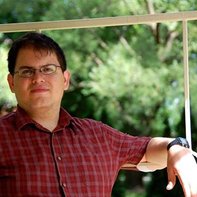Attached is a video of an NIH-3T3 expressing a novel optogenetic system termed PixELLs. In the dark PixELLs undergo protein phase separation forming liquid-like clusters as can be seen in the beginning of the movie. However, upon 450 nm light stimulation PixELLs dissolve and become diffuse. We used this PixELL system and the unique capabilities of the Mightex Digital MicroMirror Device (DMD) to test an outstanding theory in the field of protein phase separation. It had been hypothesized that when confront with a shallow gradient of an inhibitor of protein separations a cell would display a sharp boundary between regions of liquid-like clusters and diffuse proteins. We drew an ROI on the cell to stimulate with a gradient of blue light intensities from the Mightex DMD for 30 min. This type of control over the intensity and spatial range of illumination would not be possible using other forms of illumination available for confocal microscopy. This period, the location of the ROI and an approximation of the blue light intensity are indicated by the blue rectangular line that appears in the video. This experiment illustrated that indeed a gradient of inhibitor leads to sharp boundaries between regions of proteins clusters and diffuse protein that persist for long periods of time. The Images were acquired with RFP imaging settings (561 nm excitation) every 30 sec for ~80 min. This work was part of an article entitled “Protein phase separation provides long-term memory of transient spatial stimuli” featured on the cover of the June 2018 issue of Cell Systems, https://www.cell.com/cell-systems/fulltext/S2405-4712(18)30190-X.
Author: Elliot Dine, Princeton University
Bio: Elliot Dine grew up in Silver Spring MD and then attended Cornell University, where he majored in Biology. He is now a 6th year PhD student in Jared Toettcher’s Lab in the Department of Molecular Biology at Princeton University.



